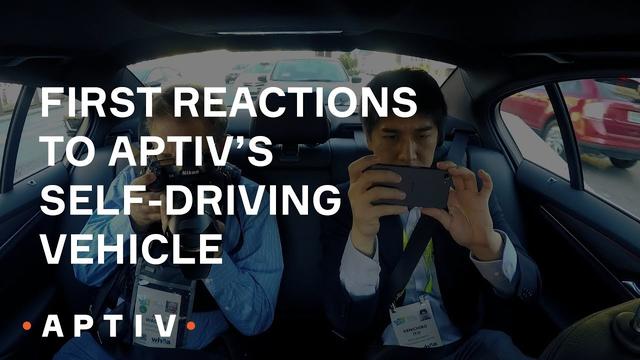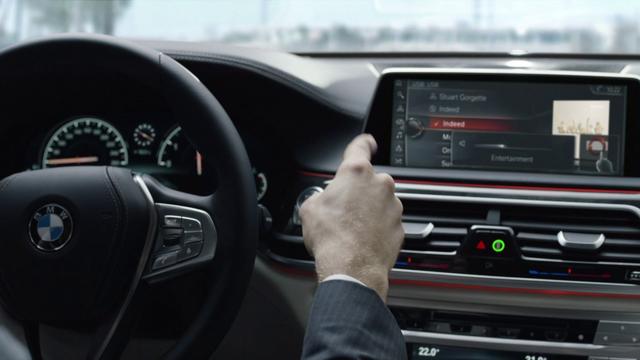Let's not just look at the Silicon Valley. Technologies for the cars of the future are being developed in Krakow
One blink of an eye. A fraction of a second during which - even if we are driving quite fast - theoretically nothing should happen. Theoretically. In practice, it is a fraction of a second in which we miss tens of thousands of information that the computer can receive and process.
Kilometers of wires, dozens of radars, cameras and sensors, sets of powerful computers to process gigabytes of information and a gigantic number of lines of code - all of this can guarantee security at a level much higher than that of a human driver. More and more often, instead of wondering what the new car has under the hood, we are interested in what it can do for us. Or what modern accessory it can surprise us with.
But modern cars are beginning to look more and more like a nervous system with their degree of complexity, and someone is needed to design the whole system and ensure that it will be reliable.
How does an autonomous car actually work?
The best explanation is that an autonomous car is compared to the human body. And just as a person perceives external stimuli with the help of, among others, the sense of pattern or hearing, the vehicle must also see, feel and hear what is happening around it.
However, recreating the human senses in the digital world is much more complicated than it might seem. One camera and a few additional sensors are not enough for the car to be able to register the world around it. A system that allows you to do it as well as a human does, and even better, is much more extensive.
Exactly how many sensors and cameras do you need? You can find out about it by looking at the autonomous car prepared by Aptiv in cooperation with BMW in detail. Why Aptiv? Because they are one of the most experienced and largest companies in this segment, because their car was the first in history to independently drive the United States from coast to coast. Their cars were driving (of course in autonomous mode) guests to CES, their systems are to ensure autonomous driving of future BMW models, and it was their cooperation with Lyft that allowed the release of 30 autonomous cars on the streets of Las Vegas.
There are a total of 9 LiDARs on board - 4 short-range LiDARs (one in the front, two on the sides and one in the rear) and 5 long-range LiDARs (two in the front, two on the sides and one in the rear) ). These devices send light pulses (using laser sensors), which are reflected from nearby objects, then recorded (using light sensors) and processed (thanks to the processor). Such action allows us to quickly and accurately determine the presence of an object and our distance from it. Contrary to appearances, it does not have to be an overly expensive or emergency solution. The semiconductor LiDAR has no moving parts that could wear out during use.
A bit more, as many as 10, there are radars - located around the entire car (6 electronically scanning and 4 close-range). Radars use radio waves that hit objects in the immediate vicinity of the car and on the basis of them, it is possible to determine the presence of an obstacle, as well as calculate our distance from it and the speed of its movement.
In addition, there is another main camera, trifocal, whose main task is to identify objects, as well as an additional camera for reading lights (after all, an autonomous vehicle must stop on red).
The equipment is completed with two GPS antennas and one antenna for short distance communication (V2V, V2I, etc.).
Such a set allows you to constantly monitor what is happening around you, and even what is happening much further, regardless of the conditions. V2x communication allows, among others read information from other cars (e.g. about the threat around the next corner) or road infrastructure (e.g. data on road repairs and traffic reorganization).
However, while the above sketch looks quite scary and suggests that the car that goes on the road will look like a vehicle straight from Mad Max, Aptiv managed to hide almost all these elements neatly in the body. Especially in the case of black paint, it is difficult to notice the differences compared to the series car, and the interior of the vehicle remains fully functional - for example, you can use the trunk, which is not - as in many cases - filled with electronics.
The difference, compared to what we have been threatened with so far in terms of autonomous cars, is gigantic. No unsightly protruding antennas, no towers with sensors on the roof, no elements that disfigure the car or limit its usefulness. But it's something that needs to be planned at the very beginning, not after adding all the modules.


However, the senses alone are not everything - you need a central unit that will be able to instantly process huge amounts of data. In the case of humans, this role is played by the brain. In the case of cars - of course, a computer (in the Aptiv autonomous car - two, together with the software for backup), armed with the appropriate software and fed with data from all sensors.
It cannot be just any computer. Data processing alone, even if it is fast enough, is not enough. First, it should be one central system that is able to combine and properly process information from all sensors in the car.
In addition, the computer must be intelligent - it must be able to decide whether if you need to change the lane after some time, e.g. for a turn, it should do it dynamically, or maybe there is a lot of space, and the traffic is calm and can carry out this maneuver more calmly.
This is where artificial intelligence comes into play. But if anyone assumes that this will be another story of success in Silicon Valley, they are unfortunately largely wrong. We are moving ... to Poland.
Why look with envy at the Silicon Valley when we have Krakow?
What does Krakow have to do with one of the most interesting new BMW products in recent years? Quite a lot. It is here, in the leading European R&D center Aptiv, which has been operating since 2000, that a solution was developed that allowed the German car manufacturer to introduce an innovative method of operating the information and multimedia system using gestures.
From the user's perspective, the whole thing seems very simple. We wave our hand and reject the incoming call. We twist a finger in the air and increase or decrease the volume of the music being played. With another gesture, we change songs or answer calls. Simple, effective, useful because you don't have to distract from the road.
However, designing this solution was much more difficult. For a computer, such gestures are not obvious and you just have to teach them. To do this, teach in such a way that it does not activate functions triggered by gestures when it is not needed.
Engineers from the Krakow R&D Aptiv center used artificial intelligence to solve this problem. First, they analyzed numerous recordings of gestures, mapping all the key elements, and then this data was fed to the AI algorithms - so that the system was able to correctly read our intentions. And it does it so effectively that it was recognized in the Automotive News PACE competition.
Handling car systems using gestures is not the only thing that the Aptiv Technical Center in Krakow deals with.
It is in Krakow that the future of the automotive industry is written.
And it is almost literally. The Polish R&D branch of Aptiv has for years been developing safety systems that go to mass-produced cars all over the world, specializing in autonomous driving and active safety. A team of over 2,000 employees (including over 1,300 engineers) has also been using artificial intelligence for a long time to improve work in the company (e.g. analysis of materials from test drives).
But now comes the time to take a step further and innovate on a much larger scale. It was the Aptiv Technical Center in Krakow that received a record PLN 33 million grant from the Polish government and the European Union for the development of technologies in the field of active safety (KRADAS project). The investment is to ultimately cost PLN 66 million.
The project was divided into four stages. In the first stage, algorithms will be developed to interpret data from sensors (including V2x communication). In the second, a model will be created that will show how the car sees and interprets the environment, while in the third, algorithms will be created and applied that will allow the vehicle to move in "high automation" mode. The fourth stage provides for the acquisition of data from at least 1 million kilometers of driving - both real and virtual.
The project will last until 2020. After completion of the works, it is planned to implement the developed technologies into mass production within the next few years.
So we can say without hesitation that it is in Poland that the foundations for the future of the automotive industry can be laid - because that the future is autonomous, no one has any doubts. And even if we are years or even decades away from cars without a steering wheel, we will not have to wait that long for the effects of the development of these technologies. The solutions that make up the autonomous driving systems are earlier on the market in the form of driving assistance systems. And each such system means greater safety, fewer accidents - and, crucially, fewer casualties.
It is definitely worth keeping your fingers crossed for such projects, the more that they are developed in our country. Especially that anyone interested can contribute to this goal.








